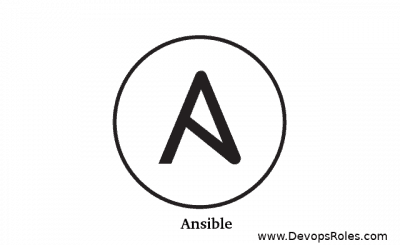Table of Contents
- 1 Introduction
- 2 What Is the Invalid Variable Name Error in Ansible?
- 3 Causes of the “Invalid Variable Name” Error
- 4 How to Fix the “Invalid Variable Name” Error in Ansible
- 5 Advanced Debugging: Complex Playbooks
- 6 Best Practices for Avoiding “Invalid Variable Name” Errors
- 7 Frequently Asked Questions (FAQs)
- 8 Conclusion
Introduction
If you’ve worked with Ansible to automate tasks, you’ve likely come across the dreaded “Invalid Variable Name” error. While Ansible is a powerful tool that makes infrastructure management a breeze, strict variable naming rules can cause errors that interrupt your workflows.
This guide will walk you through everything you need to know about resolving the “Invalid Variable Name” error in Ansible. Whether you’re a beginner or an advanced user, you’ll find actionable tips to help you avoid these pitfalls, understand common causes, and learn best practices to optimize your automation scripts.
What Is the Invalid Variable Name Error in Ansible?
Ansible uses variables extensively to simplify automation tasks, but these variables must follow specific naming rules. When you break these rules, Ansible responds with the following error:
ERROR! Invalid variable name at line X, column YThe error occurs because the variable name you’ve used doesn’t conform to Ansible’s requirements. To help you get back on track, let’s explore why this happens.
Causes of the “Invalid Variable Name” Error
1. Special Characters in Variable Names
Variable names in Ansible can only include letters, numbers, and underscores (_). Using special characters like hyphens (-), ampersands (&), or asterisks (*) will trigger the error.
Example:
vars:
invalid-variable: "Hello World" # This will cause an errorSolution: Replace the hyphen with an underscore.
vars:
valid_variable: "Hello World" # This will work
2. Starting Variables with Numbers
Ansible does not allow variables to start with numbers, as it confuses the YAML parser.
Example:
vars:
123name: "Ansible" # InvalidSolution: Start the variable with a letter.
vars:
name123: "Ansible" # Valid3. Spaces in Variable Names
Spaces in variable names are not allowed in Ansible, as they conflict with YAML’s structure.
Example:
vars:
my variable: "Ansible" # InvalidSolution: Use underscores instead.
vars:
my_variable: "Ansible" # Valid4. Reserved Keywords
Ansible has specific keywords reserved for internal use. If you use one of these reserved keywords as a variable, it will trigger an error.
Example:
vars:
ansible_facts: "Custom facts" # Invalid, as this is a reserved keywordSolution: Rename the variable to avoid conflicts.
vars:
custom_facts: "Custom facts" # Valid5. Incorrect YAML Formatting
Although not directly related to variable names, incorrect YAML formatting—such as missing colons or improper indentation—can sometimes cause variable-related errors.
Example:
vars
my_var: "Invalid formatting" # Missing colon after 'vars'Solution: Fix the formatting to ensure proper structure.
vars:
my_var: "Correct formatting"How to Fix the “Invalid Variable Name” Error in Ansible
Once you identify the cause of the error, fixing it becomes straightforward. Below are step-by-step solutions for common variable name errors.
Fix Special Characters
Example:
vars:
invalid-variable: "Fix this"Fix: Use underscores instead of hyphens.
vars:
valid_variable: "Fixed!"Fix Variables Starting with Numbers
Example:
vars:
123name: "Fix this"Fix: Start the variable name with a letter.
vars:
name123: "Fixed!"Fix Spaces in Variable Names
Example:
vars:
my variable: "Fix this"Fix: Replace spaces with underscores.
vars:
my_variable: "Fixed!"Fix Reserved Keywords
Example:
vars:
ansible_facts: "Reserved keyword"Fix: Choose a unique name.
vars:
custom_facts: "Fixed!"Advanced Debugging: Complex Playbooks
For larger or more complex playbooks, you may need to take a more systematic approach to troubleshoot the “Invalid Variable Name” error.
1. Use YAML Linters
Use a YAML linter like yamllint to catch formatting and variable errors before running your playbooks.
2. Enable Ansible’s Verbose Mode
Running playbooks with Ansible’s verbose mode (-vvv) can provide more detailed error messages, making it easier to track down issues.
ansible-playbook playbook.yml -vvv
3. Break Down Large Playbooks
Divide your large playbook into smaller roles or tasks. Modularizing your playbooks makes it easier to isolate errors and reduces complexity.
Best Practices for Avoiding “Invalid Variable Name” Errors
To avoid encountering this error in the future, follow these best practices:
- Stick to Letters, Numbers, and Underscores: Use only valid characters when naming variables.
- Descriptive Variable Names: Choose meaningful, descriptive names to improve readability and reduce the risk of errors.
- Avoid Reserved Keywords: Never use reserved Ansible keywords as variable names.
- Validate Playbooks with Linters: Regularly validate your YAML files using linters to catch errors early.
Frequently Asked Questions (FAQs)
1. What characters are allowed in Ansible variable names?
Ansible variable names can only include letters, numbers, and underscores. Special characters and spaces are not allowed.
2. Why can’t I start a variable name with a number?
Variables cannot start with a number because Ansible uses strict YAML parsing rules. Starting with a letter or underscore ensures compatibility.
3. What are reserved keywords in Ansible?
Reserved keywords include terms like ansible_facts, inventory_hostname, and group_names. These are used internally by Ansible and should not be redefined as variables.
4. How can I quickly identify an invalid variable name?
Using a YAML linter or running your playbook in verbose mode can help quickly identify where the invalid variable name is located.
Conclusion
The “Invalid Variable Name” error in Ansible is a common issue that can be easily avoided by following Ansible’s strict naming conventions. Whether it’s avoiding special characters, numbers, or reserved keywords, a little attention to detail can go a long way in preventing these errors.
By following the examples and best practices outlined in this guide, you can ensure that your playbooks run smoothly and efficiently. If you’re dealing with larger, more complex playbooks, remember to leverage tools like YAML linters and verbose mode to simplify debugging.
Take the time to implement these solutions, and you’ll find your Ansible workflow becoming smoother and more productive. Thank you for reading the DevopsRoles page!

